Author Archives: Richard Emmons
Author Archives: Richard Emmons
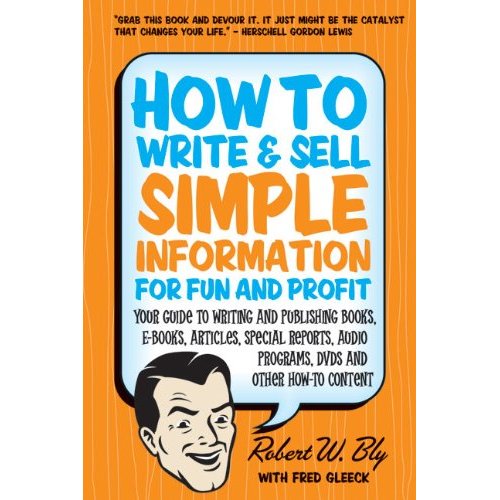
In this article by author and master marketer Bob Bly, you’ll learn about how you can convert your specialized business knowledge into a side income. I have learned a lot from Bob Bly over the years and hope you make him one of your “virtual mentors.”
There’s a lot of money in teaching the business, tasks, and skills you have mastered … and the information you have researched, learned, and produced … to others who seek them.
Collectively this is the knowledge business, or as I like to call it, “the college of knowledge” — packaging your knowledge as products and services to sell for a price.
Including: ebooks … newsletters … special reports … books … online courses … webinars … seminars … college courses … conferences … boot camps … coaching … consulting … DVDs … audio CD albums … training … membership sites … Facebook groups … the list goes on and on.
So, how is it that a “knowledge business” even exists? What makes it possible?
The key to it all a simple principle George Clason wrote about in his book The Richest Man in Babylon:
“That which one man knows can be taught to others.”
That’s the premise — proven since the dawn of humankind — on which today’s knowledge business is based.
Now, some who want to get into the knowledge business protest, “But I am just ordinary; I don’t know anything others will pay for.”
This is almost never the case.
As my colleague Dr. Gary North warns: “The great mistake of most small business people is to imagine that their detailed knowledge of their niche market is widely dispersed.
“On the contrary, hardly anyone knows it. They are owners of a capital asset that others do not possess and have no easy way of possessing it.”
And will therefore pay handsomely to obtain.
Another objection I hear is: “Well, I know something about topic X. But I am not the world’s leading expert. So how can I presume to teach others?”
Info marketing guru Fred Gleeck astutely notes:
“You don’t have to know more about your topic than anyone else in the world. You just have to know more than 90% of the people in the world.”
And either you do now … or can get to that level with some work on your part.
Widely quoted research shows it only takes 1,000 hours to be competent at something. And it requires 10,000 hours of practice and study to become a master of it.
Also, if you know the subject and how to teach it to others, you are a better source of knowledge transfer than other experts who perhaps know more than you — but are lousy teachers, as so many are.
The next objection is: “There is so much information available for free on my topic already on the internet, why would anyone pay me for the same information they can already get on the web at no cost?”
Here’s the thing: What is widely available online is just data and information.
But in the knowledge business, we don’t merely sell data and information … although, both are usually part of our offerings.
What sets us apart is that our paid info products and services provide:
Data we have collected through long effort that others in fact do not have.Deep knowledge gleaned from our data and long experience.
Analysis of the data and knowledge to show what it means and how our customers can benefit from it.
Actionable ideas tested and proven to enable those using them to achieve the desired results.
Wisdom to understand what will work in a field, what won’t, and to consistently know the difference.
In other words, mere data and information are often free for the asking.
But actionable ideas on how people can use it for their gain are in short supply … and again, people will pay you handsomely to get this knowledge.
One more fact about the knowledge business:
If you gain a wide base and become a recognized authority in your field, people will pay a premium for your knowledge.
If you don’t, they are less likely to do so.
Also, it doesn’t take a huge audience to make a good living in the knowledge business.
If you build a list of just 10,000 fans and each spends only $100 a year with you, your gross annual income is a million dollars.
Not too shabby.
Sincerely,
Bob Bly
Copywriter / Consultant
31 Cheyenne Dr.
Montville, NJ 07045
Phone 973-263-0562
Fax 973-263-0613
www.bly.com

When you write great headlines, you improve the results of every advertisement, flyer, invitation, press release, client letter, and email you write. Remember that 73% of the buying decision is made at the point of the headline. And “buying” can mean opening the email message, listening to the rest of the TV or radio ad, reading the rest of the newspaper advertisement, buying the product or registering for a community seminar. So let’s spend some time looking at proven ways to create great headlines.
Ted Nicholas has written books selling over a million copies including How To Form Your Own Corporation For Under $75 . Ted recommends writing the headline first before writing any other part of the ad. He starts out by listing every possible benefit he can think of. Next he turns benefits into headlines and writes as many as he can think of. Sometimes as many as 200 for one product! Once you’ve settled on the main headline you can start putting together the rest of the ad. You can use the “runner up headlines” as “sub-headlines” to highlight other advantages of the product or service.
Remember that your headline must speak to a want, need or desire of your prospective customer. This is the big benefit that your product or service offers.
Now let’s look at 7 ways to write a great headline.
When you see the same exact ad running again and again in your local paper or in a magazine, you know it must be working. And a great headline is the number one reason an ad will work again and again. Folks see the ad, read the headline and then the rest of the ad and finally take action.
Now take a look at your own ads and see how you can improve the headlines.

You begin the process of creating an effective ad by thinking of one of your best clients, a wealthy widow by the name of Sally Jones. You write the ad for Sally so your ad will speak to Sally and people like her.
You absolutely do not want to design the ad to please yourself. As author Jerry Reitman wrote, “Bait the hook to suit the fish, not the fisherman.” One of you is enough! You want more Sally’s so your ad should speak to Sally and get people like Sally to take action.
Over the years, successful writers have developed copywriting formulas which produce effective ads, TV commercials, and sales letters. I first learned about the “AIDA” formula in 1989 from marketing expert, Jay Abraham.
AIDA stands for attention, interest, desire and action. Your ad must get the buyers’ attention, build interest in your product or service, create desire to own that product or service, and finally ask the viewer or reader to take action to get that product or service.
You get your reader’s attention with a powerful headline. This is the key.
Ted Nicholas became famous selling his best selling book, How To Form Your Own Corporation Without An Attorney For Under $50. He spent hundreds of millions of dollars promoting this and other books in full-page magazine ads. He says that “73% of the buying decision is made at the point of the headline.”
Without a powerful and persuasive headline, your ad copy won’t be read. Your offer won’t be considered. You’ll waste your money.
So what should a good headline do? In Bob Bly’s The Copywriter’s Handbook, he describes the four functions of a headline:
Let’s consider these four functions as we look at a few headlines.
“How To Win Friends and Influence People”
Dale Carnegie wrote this best-selling book during the 1930‘s. The book’s title served as the headline for ads selling the book. This headline grabs the reader’s attention and builds curiosity because who doesn’t want more friends? So this headline/title does #1 and #4. In a way, it selects the audience (#2) because everyone wants more friends.
“Did Your 401(k) Become a 201(k)?”
This headline grabbed attention (#1) by dramatizing a 50% fall in the stock market. It selected the audience (#2) by assuming the reader had a 401(k). It pulls the reader into the copy (#4) because it implies a solution to the problem of a falling retirement portfolio. While powerful, it missed on #2 by not offering a solution to the problem. I suppose “Turn Your 201(k) Into a 301(k) With Chinese Growth Stocks” would fulfill #3 but only testing would show if it was as effective.
“Worried About Outliving Your Retirement Funds?”
This headline grabs attention (#1) by pointing the pain of running out of money during retirement. It selects the audience (#2) advisors want to reach because pre-retirees and retirees worry about this; 25 year-olds don’t give it a thought. It can’t deliver a complete message because the problem will differ greatly from person to person. Yet it raises a real concern during times of rising prices and low interest rates and draws the reader into the rest of the ad (#4).
The most common mistake in advertising is using your business name at the top of the ad as the headline. Look at all the ads in the yellow pages or your local paper. How many put the company name the top in big letters? Most. Use a powerful and compelling headline and you’ll have far more effective ads. Why? Because your prospects will read on….
Next, you need to build interest in the reader for your service or product. Keep the reader interested by providing more facts which show in words or imagery you can deliver on the promise made in the headline. Pile on multiple benefits that will improve their lives.
Validate your claims by offering proof you can deliver on your promises. This proof can include references to your education, certifications, and years in business. Perhaps you’re a radio show host or have written articles in your local paper or other major publications.
Include some client testimonials and let your customers praise you in print. In local markets, this provides powerful proof that you will deliver what you’re promising.
You build up desire by helping them imagine how they’ll feel after buying your product or service. Your product will make their life better and more enjoyable. Whether it’s a night on the town or a better retirement. you want your prospect to want what you have to offer.
You should offer the best guarantee you can. You can also build desire by offering additional free bonuse or limited time offers.
And how do they fulfill their desires? By accepting your offer….
Finally, you need to close the deal and get the reader to act now and accept your offer. You want them to take an action step to get them to your website or place of business.
Your offer will differ depending on the ad placement. Yellow pages ads run all year long so the offer might be for a free report on “The 7 Most Common Mistakes and How To Avoid Them.” An advertisement for a no obligation tax planning analysis would work during tax season. Yet an ad for a free community seminar will only work a week prior to the event.
In a previous article, I wrote about giving away free information. Just remember that you need to offer your prospect something of value so they’ll contact you.
Your offer ends with a call to action. “Call our office today to receive your free report.” Or “Visit our website to get all the details and find out how they can get a free sample..”
At the bottom of your ad you can include your company name, address and contact information. Make it easy to read so they can take action and get a hold of you.
In my next article I’ll look show you some more ways to create effective headlines.
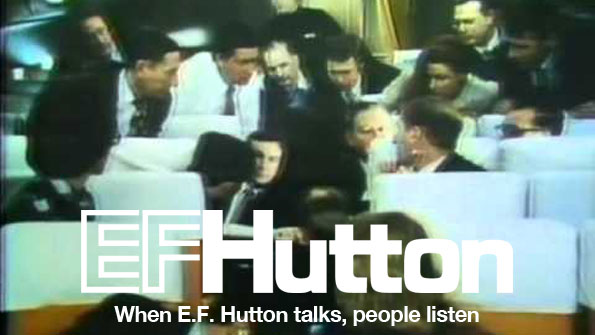
“Half my advertising is wasted, but I don’t know which half.” ~ John Wanamaker, 19th century retailer
You’ll find improving your advertising to be one of the best ways to leverage your marketing dollars. Why? Because an ad costs the same whether it brings in 1 call per day or 10 calls per day. So improve your ads and you’ll get more calls without spending an extra dime on advertising.
Let’s define the two major types of advertising: General (or image) advertising and direct response advertising.
Copywriter Bob Bly defines general or image advertising as “advertising that seeks to instill a preference for the product in the consumer’s mind to promote the future sale of the product at a retail outlet or through a distributor or agent.” Image advertising is seen every day in TV commercials for consumer products and magazines such as Forbes and Fortune for institutional advertising. Some famous image advertising campaigns included:
“Merrill Lynch is bullish on America.” This slogan was introduced during the 1971 World Series.
“When E. F. Hutton talks, people listen.” Very memorable ad…but would it make you call a broker and invest some money?
E.F. Hutton no longer exists as a business although their old ads remain alive on YouTube.com.
Many businesses place small display ads in their local newspapers to get their name out there. Similarly, I see “business card” sized ads in the local Chamber of Commerce magazine of guess what? The company owner’s business card. Normally this would fall under image advertising because it just gets your name, contact number, and perhaps areas of expertise out in the marketplace. A caller might tell you they saw your ad in the Chamber paper. Or you can ask them how they heard about you. Otherwise, you won’t really know if it’s helping or not.
Bob Bly defines direct response advertising as “advertising that seeks to get orders or leads directly and immediately rather than build an image or awareness over a period of time.” This type of advertising is the opposite of image or general advertising.
Direct response ads are easy to spot when you see a coupon at the bottom of the ad. Or you’re asked to call an 800 number to order the product. You measure the response to these ads to know how well the ad is working. You can change the headline or the offer and know if you improved or hurt the ad.
You can turn your “image ad” into a direct response ad by offering a free report. This could be a written report or an audio interview on CD. The viewer of the ad is asked to call your office to get their free report. You capture their name and address so you can mail them the report. You can also ask, “Would you like to receive helpful and interesting investment information via email?” You can mail them the report with a copy of your last physical newsletter. Most importantly, you can measure the success of the ad because you’ll know how many people call in to request the report.
Direct response advertising also allows you to measure the relative strength of different advertising mediums. For instance, you might advertise in 2 different yellow pages. You could offer different reports and track which yellow pages works better for you. Otherwise, you just have to guess. Online searches may eventually put the yellow pages out of business. Only time will tell. But if you track your own yellow page ads you’ll know when it’s time to pull the plug on yellow pages.
Glitzy image advertising might win a design award. And get posted on YouTube.com. But you want to win new clients. So use direct response advertising to get prospects to call your office now and get them in your marketing pipeline. Measure your results so you can test different ads. Keep your winning ads and cull the losers.
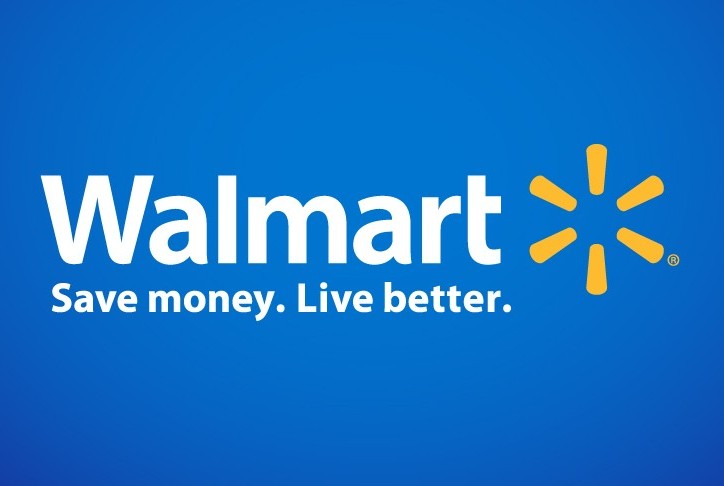
In a recent post we spoke about creating a USP or “unique selling proposition.” Your USP answers the question of why someone should do business with you rather than with a competitor or just do it themselves. Your USP sets you apart from your competitors. Walmart’s USP reminds its customers that they are saving money and improving their quality of life by shopping at Walmart. You need to put your USP to work to grow your business. Your goal is to put your USP in all your marketing materials and in every communication piece your clients see. Let’s list some easy ways:
Other places may wait until you need to reprint:
The last one might seem odd at first glance but really it’s critical. Imagine if one of your employees was asked, “What makes your boss different from all the other financial advisors out there?” What would she say? Imagine, a Fed Ex employee being asked in 1978, “Why should I pay ten bucks to mail a letter?” “I don’t know” would be the wrong answer! All your employees should know what makes you different and better and be able to explain why you’re the best choice. You need to ensure that you can deliver on your promise so your employees must be trained to deliver on your USP. Proverbs 29:18 states, “Where there is no vision, the people perish.” Use your USP training to get your employees jazzed up on how you aim high and want to over deliver on your promises. 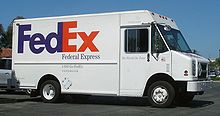
Remember that you can update your marketing materials over time. And when your business changes, you’ll need to update your USP to match. Be glad you don’t have a fleet of 30,000 trucks to repaint every time you update your USP!

Every business and business professional should have a “USP” which stands for “unique selling proposition.”
Without a USP your advertising will have a plain vanilla, me-to appearance which won’t lead people to take action. When you have a good USP and deploy it in your advertising, you’ll attract more clients like you want. You’ll also keep away folks who aren’t your targeted clientele.
Rosser Reeves invented the term “USP” in the 1960’s. In his book, Reality in Advertising, he defines what makes a good USP:
1. Each advertisement must make a proposition to the consumer. Not just words, not just product puffery, not just show-window advertising. Each advertisement must say to each reader: “Buy this product, and you will get this specific benefit.”
2. The proposition must be one that the competition either cannot, or does not, offer. It must be unique—either a uniqueness of the brand or a claim not otherwise made in that particular field of advertising.
3. The proposition must be so strong that it can move the mass millions, i.e., pull over new customers to your product.
Here are some well known examples which meet this 3-part definition:
Domino’s Pizza: “You get fresh, hot pizza delivered to your door in 30 minutes or less — or it’s free.” Notice it says nothing about Mama’s recipe, taste, or low price. This created a whole new market at a time when it took 30 to 40 minutes to get a pizza at pizza restaurants.
FedEx: “When your package absolutely, positively has to get there overnight” This USP answered the question, “Why would anyone want to pay ten bucks to mail a letter?”
M&M’s: “The milk chocolate melts in your mouth, not in your hand” Rosser Reeves created this USP over 40 years ago and it still works great.
Wonder Bread: “Wonder Bread Helps Build Strong Bodies 12 Ways” Maybe it does, maybe it doesn’t. It sure sold a lot of bread.
Did it occur to you that 3 of these 4 USP’s are no longer used by their companies? I had to look up Wonder Bread and found they use “Soft. Delicious. Nutritious.” Fed Ex does a lot more today than overnight delivery so they use “Save more as you ship more, Think FedEx First.” Pizza Hut’s website emphasizes that it wins national taste tests.
You also need to remember to use your USP in all your ads and in contact with customers and prospects. I noticed in the fine legal print on Domino’s home page:
Domino’s new hand tossed pizza has been reinvented from the crust up to be our best tasting pizza ever. Guaranteed. If you are not completely satisfied with your Domino’s pizza experience, we will make it right or refund your money.
This should be in BIG print in the headline of the webpage. 99% of web visitors will miss this. Guarantees are a great way to create a USP.
Your USP should be visible and become part of your daily operations…not just something for your advertisements or website. Let me give you an example.
My mom came across a letter written to me back on April 23, 1976. I had written to M&M-Mars after getting some red, green or brown coloring on my hands while eating some M&M’s. I can’t remember what motivated me to write them. Maybe it was school assignment. Maybe I was just being a wise guy. Here’s their reply:
Dear Richard:
Thank you for your letter and your interest in M&Ms Chocolate Candies.
In our advertisements we say: “THE MILK CHOCOLATE MELTS IN YOUR MOUTH – NOT IN YOUR HAND”. The melting to which you referred was undoubtedly caused when the pure food coloring in the thin sugar shell came in contact with the moisture in your hands. This sometimes happens if the candy is held for a while.
The objective of our advertising is to acquaint consumers with the fact that M&Ms Chocolate Candies are neat to eat and do not have the mess of other chocolate products that do not have thin sugar shells protecting the chocolate centers.
Thank you again for your interest in writing to us.
Very truly yours,
(Miss) Eleanor C. Trautwein
Customer Service Manager
Now let’s talk about USPs for business professionals. Your USP should answer the question, “Why should someone choose you as their advisor over all other advisors in your area and instead of doing it themselves?”
Obviously, you can answer this question in numerous ways. Let’s categorize them as good, bad and ugly.
Let start out with “ugly” USPs for business professionals.
Ugly ones will get you in trouble with your compliance department. This may affect you if you are a financial advisor, insurance agent, CPA or tax professional. For instance, Montgomery Ward first used “Satisfaction guaranteed or your money back” in 1874. Worse yet, “Retire as a millionaire…” These sound lame because compliance departments don’t like anything which is promissory in nature. FINRA won’t let advisors use client testimonials so that eliminates a lot of ideas for USPs. Your industry standards will set boundaries on what you can say.
Next, what makes a “bad” USP for a professional?
Something vague or a cliche like “Quality Service. High Standards.” Every one can say this so why bother? If your client or prospect reads something and says “So what?” or “Duh. Every advisor does that” then you know you need to work harder. I see this all the time with advisor websites which use the boilerplate verbiage provided by the website company.
What makes a good USP for a professional?
A good USP describes who you are, what makes you different and tells your story in a way that sells your prospect on your ability to get the job done for them. So an advisor’s USP should be more of a core story than a tagline like Walmart’s “Save Money. Live Better.”
You shouldn’t put too much weight on your designations. There are over 50,000 CFP’s in the United States. Many advisors argue this designation is the best one to have. Few would argue that it sets them apart like it did ten or twenty years ago. Yet, how many advisors describe why they pursued the CFP certification and how it improved their ability as a planner? Plus states are cracking down on new designations these days so you wouldn’t want to build your marketing around a designation which may be on the outs in the near future. Even if you’re the only one in town with it.
How do you get started creating your own USP/core story?
Easy, just start calling up your best clients. Ask them why they initially started doing business with you and why they continue to do business with you. Something about you attracted them to you and kept them from going elsewhere. Or may be they did go elsewhere and came back to you. What did they not like about that other financial advisor?
Next, look at your own story and how you got to where you are today. You’ll want to uncover details about your life which made you the advisor you are today.
Finally weave this information together so that your own unique story is told in a way that will attract your a-list clients. Never forget you are a unique individual and the “U” in “USP” stands for “unique.” Be yourself. Don’t be bland. Stand out from your peers.
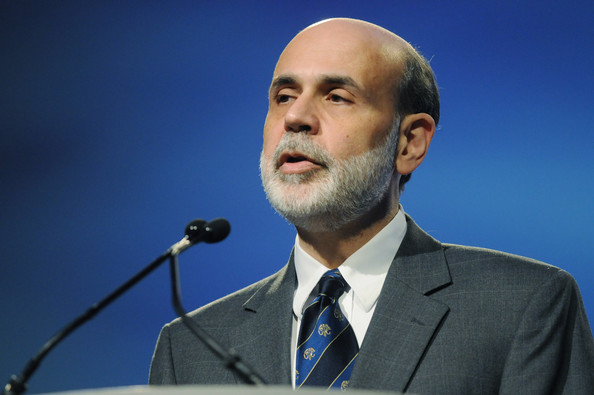
Yes, absolutely! For 90 years, Toastmasters has helped people become more effective public speakers and leaders from all walks of life. Even former Chairmen of the Federal Reserve System.
Ben is off to a good start in his new career as a former Fed Chairman. This week Reuters reported that Ben earned a cool quarter of a million dollars for his first speech since leaving the Fed. You can read all about it here.
Bernanke enjoys ‘fruits of free market’ with first post-Fed speech
The article points out that he earned as much for his 40 minute speech as he earned in a full year as Fed Chairman. Not a bad start. Of course, this is pre-tax so he’ll need to do a second speech to pay the taxes on the first one.
Ben Bernanke earned more in 40 minutes on Tuesday than he made all of last year as head of the U.S. Federal Reserve.
Bernanke was paid at least $250,000 for his first public speaking engagement, in Abu Dhabi, since stepping down in January, according to sources familiar with the matter. That compares to his 2013 paycheck of $199,700, and the appearance was only the first of three around the world this week.
Toastmasters teaches folks how to speak in a clear, concise and compelling manner. With some effort, perhaps Ben could cut this speech down to 30 minutes. This would allow more time for questions and answers and even allow Ben to enjoy a free lunch at his host’s expense.
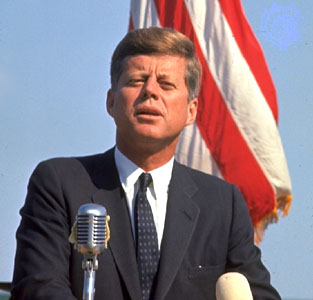
I don’t know of anyone who was born a great public speaker. In fact, most people can’t put two words together when they’re born. President John F. Kennedy was no different. He learned how to be a memorable public speaker. Read this article by copywriter and author John Forde and you’ll improve your public speaking as well.
A little after 12:30 in the afternoon, a young woman fed her seven-day-old son. They were, in fact, just two days home from the hospital.
Like a lot of young mothers, she was just then coming to grips with how much her life had already changed — when it changed again.
That was my mother and brother, on the day Kennedy was shot. Where was I? Not even an idea yet.
But growing up Irish Catholic… in definitively Democratic Philadelphia… there was no debate: Kennedy, we were all taught, had been a hero.
These days, you might not have to look too hard to find people who question that assessment. I’m pretty sure, in fact, a few would love to tear down that version of history.
But even they might have to agree, if there was one thing about Kennedy — other than his family money and his weakness for Hollywood starlets — it’s that the guy sure could deliver a great speech.
And what is a speech, dear reader, but a format-test on a kind of persuasive sales piece?
Think about it…
Kennedy knocked the cover off the ball with his “Ask not…” inaugural address. It’s been called the best inaugural speech ever given.
Kennedy did it again with “Ich bin ein Berliner,” delivered to thundering applause in West Berlin.
He also famously used words to undo the Cuban missile crisis. Not a shot was fired.
And then there’s that time he challenged America to walk on the moon, “because it’s there,” delivered in a speech he gave to the graduating class of Rice University.
The examples could go on.
But, as we close in on tomorrow, the 50th anniversary of Kennedy’s assassination, I’ll bet there are a few things you didn’t know. For instance, according to historian Robert Caro, Kennedy wasn’t always so great at the pulpit.
Says Caro…
“[Kennedy’s] early speeches… were read from a prepared text with all the insecurity of a novice, in a voice ‘tensely high-pitched’ and “with a quality of grave seriousness that masked his discomfiture . . . He seemed to be just a trifle embarrassed on stage.”
Once, goes the story, Kennedy was so nervous about forgetting a speech while he was running for Congress, his sister Eunice stood in front of the stage, mouthing the words to help him remember.
That changed with practice on the campaign trail. It also changed when Kennedy started working with his great speechwriter, Ted Sorensen, who became Kennedy’s wingman (and possibly more, though Sorensen always insisted otherwise) on all those Kennedy “moments” we still talk about now.
What also made a big difference, according to Sorensen and many others, was that Kennedy and his writing team mastered six powerful secrets rhetorical persuasion — all six of which seem worthy of using in your sales copy writing, too.
Which six? Per the BBC, Kennedy’s secret sauce drew largely from the following list…
1.) The Power of Contrasts, as in Kennedy’s famous line, “Ask not what your country can do for you, but what you can do for your country”
2) The Power of Threes, especially in lists, like in the Kennedy line, “Where the strong are just, and the weak secure and the peace preserved.”
3) The double-punch you get by combining lists and contrasts together, as in the line, “Not because the communists are doing it, not because we seek their votes, but because it is right.”
4) The Apt Application of Alliteration, as you see (and hear) in a line like Kennedy’s, “Let us go forth to lead the land we love.”
5) The Pull of Powerful Imagery, like he gave us in the simple phrase, “The torch has been passed to a new generation of Americans.”
6) The Simple, Sensible Secret of Knowing Your Audience. Kennedy’s was the first inaugural speech delivered to a global audience, in real time. And he (and Sorensen) made sure everybody knew it, with no fewer than six lines that directly addressed allies and enemies overseas.
Again, this isn’t just for speechwriters… or Presidents. These are tricks you can lean on too. Just something to think about, as the airways echo Kennedy’s words on the big day tomorrow. . . .
I’ve read John Forde’s articles for years to learn more about the art and science of copywriting. You can learn more about effective writing effective ads by signing up for his free e-newsletter. You’ll get $78 worth of free gifts as John’s way of saying thanks. http://copywritersroundtable.com
Picture credit: © Arthur Rickerby—Black Star/PNI

Anyone considering going to college needs to understand that a college degree is no guarantee of a better financial future. College costs way more than ever before and the job prospects have never been worse. Here is some sobering news from BusinessInsider.com that’s worth considering:
After all the nearly 19 million 4-year college graduates expected over from 2010 to 2020, according to the NCES, will be disappointed to find only 8.5 million job openings requiring a bachelors degree over the same period, according to the BLS.
Many of those college students would have done better to go to a technical school for better job prospects at lower cost. Those who did go to college had better have put some thought into picking their major.
Get out your calculator and do the math: 19 million college graduates going after 8.5 million job openings requiring a college degree means 10.5 million college graduates will take jobs which don’t require a college degree.
The pool of college graduates is growing more than twice as fast as the pool of jobs requiring a college degree.
The Center for College Affordability shows this as a graph:
This is a picture of college graduate underemployment. Not “unemployment” of college graduates. These graduate will end up with jobs just not jobs which require a 4-year degree.
You might be thinking, “This is just a projection of future employment. No one can see the future perfectly.” True enough. What’s today’s job market look like? More and more jobs today are filled by people with college degrees than ever before.
Forty years ago very few taxi cab driver, carpenters and bank tellers had college degrees. Now more have degrees than ever before. Here’s another sobering graph from the Center for College Affordability:
I encourage you to click through and read the entire article in BusinessInsider.com. You’ll read about the millions of American college graduates holding jobs which don’t require a college degree. Or any college at all. You’ll also learn that “26 of the 30 fastest growing occupations don’t require a bachelor’s degree.”
Don’t expect to hear that from your high school guidance counselor, college admission officers, or even your parents. You need to do your homework now and save the time, debt and heartache from completing your college degree and ending up in the same job you could have gotten when you graduated from high school.

Ever wondered who will inherit your digital library? Unless the laws are changed, your MP3s and e-books may go to the grave with you.
Today MarketWatch reported on this growing problem and offered a couple of solutions.
Many of us will accumulate vast libraries of digital books and music over the course of our lifetimes. But when we die, our collections of words and music may expire with us.
Someone who owned 10,000 hardcover books and the same number of vinyl records could bequeath them to descendants, but legal experts say passing on iTunes and Kindle libraries would be much more complicated.
And one’s heirs stand to lose huge sums of money. “I find it hard to imagine a situation where a family would be OK with losing a collection of 10,000 books and songs,” says Evan Carroll, co-author of “Your Digital Afterlife.” “Legally dividing one account among several heirs would also be extremely difficult.”
Part of the problem is that with digital content, one doesn’t have the same rights as with print books and CDs. Customers own a license to use the digital files—but they don’t actually own them.
Imagine all those 99 cent Kindle novels being vaporized in the Cloud when you die. Let’s look at a possible solution:
There are still few legal and practical ways to inherit e-books and digital music, experts say. And at least one lawyer has a plan to capitalize on what may become be a burgeoning market. David Goldman, a lawyer in Jacksonville, says he will next month launch software, DapTrust, to help estate planners create a legal trust for their clients’ online accounts that hold music, e-books and movies. “With traditional estate planning and wills, there’s no way to give the right to someone to access this kind of information after you’re gone,” he says.
Here’s how it works: Goldman will sell his software for $150 directly to estate planners to store and manage digital accounts and passwords. And, while there are other online safe-deposit boxes like AssetLock and ExecutorSource that already do that, Goldman says his software contains instructions to create a legal trust for accounts. “Having access to digital content and having the legal right to use it are two totally different things,” he says.
The simpler approach is to pass down your devices to an heir when you die…and give them your userid and password at the same time.
Source: http://www.marketwatch.com/story/who-inherits-your-itunes-library-2012-08-23